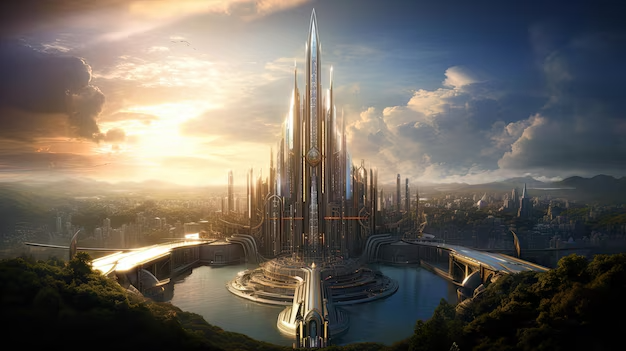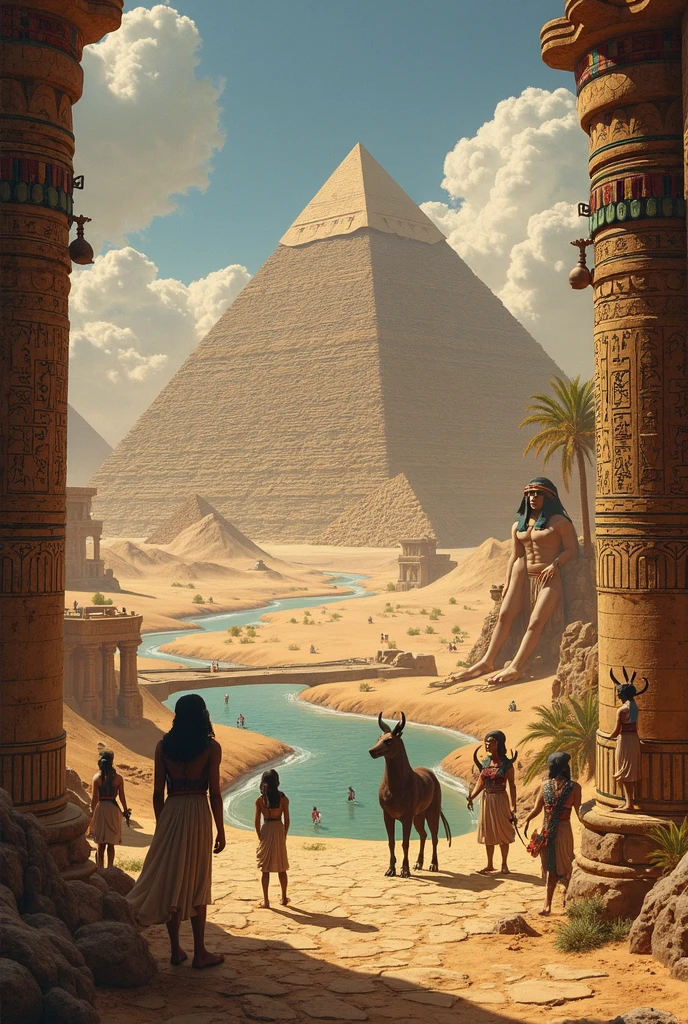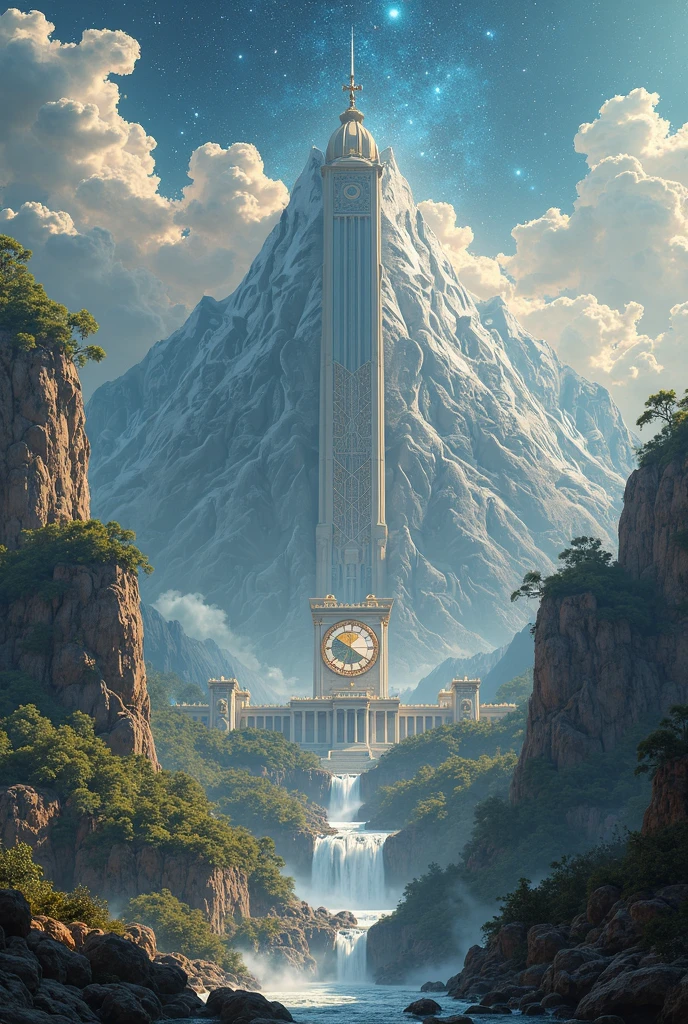Polynesian Mythology: Gods, Legends, and the Hero Maui
The rich tapestry of Polynesian mythology is filled with captivating stories of gods, demigods, and legendary heroes. Among these figures, Maui stands out as one of the most beloved and influential characters. Known for his cleverness and supernatural abilities, Maui’s adventures are central to the cultural identity of many Polynesian islands. This article explores the myths surrounding Maui, as well as other key deities like Tangaroa, Pele, and the symbolic Tiki, while also delving into themes of navigation and creation.
The Legend of Maui: The Trickster Demigod
In Polynesian lore, Maui is a demigod known for his cunning and bravery. His exploits vary slightly across different island cultures, but common themes include fishing up islands, slowing the sun, and stealing fire for humanity. Below are some of his most famous feats:
- Fishing up islands – Using a magical fishhook, Maui pulled islands from the ocean.
- Slowing the sun – To give people more daylight, Maui lassoed the sun and forced it to move slower.
- Bringing fire to humanity – Maui tricked the fire goddess Mahuika into giving him fire.
Maui in Different Polynesian Cultures
| Island/Region | Variation of Maui’s Legend |
|---|---|
| Hawaii | Maui is a trickster who captures the sun and steals fire. |
| New Zealand (Māori) | Maui fishes up the North Island (Te Ika-a-Māui). |
| Tahiti | Maui is associated with creation and navigation. |
Tangaroa: The God of the Ocean
Another pivotal figure in Polynesian mythology is Tangaroa, the god of the sea. Revered by fishermen and navigators, Tangaroa is often depicted as both a creator and a destroyer. His influence extends across many Polynesian cultures, where he is sometimes seen as the father of all sea creatures.
- In Māori tradition, Tangaroa is a son of Rangi (Sky) and Papa (Earth).
- In Hawaiian mythology, he is known as Kanaloa, associated with the ocean and healing.
Pele: The Fiery Goddess of Volcanoes
Among the most powerful deities is Pele, the Hawaiian goddess of volcanoes and fire. Her legends are deeply tied to the volcanic landscapes of Hawaii, where she is said to reside in Kīlauea. Pele’s stories often involve her fiery temper and her battles with her sister, the sea goddess Nāmaka.
Key aspects of Pele’s mythology include:
- Her ability to shape the land through eruptions.
- Her role as both a creator and destroyer.
- Her association with sacred chants (oli) and hula.
Tiki: The First Man and Symbol of Polynesian Culture
The Tiki is a central figure in Polynesian mythology, often representing the first man or a god-like ancestor. Carved wooden or stone Tiki statues are common across Polynesia, serving as protectors and spiritual symbols. In some traditions, Tiki is also linked to creation myths.
Types of Tiki and Their Meanings
| Tiki Type | Symbolism |
|---|---|
| Manaia Tiki | Protection and spiritual guidance |
| Hei Tiki | Good luck and fertility |
| Moko Tiki | Connection to ancestors |
Navigation and Creation in Polynesian Mythology
Polynesian mythology is deeply intertwined with the themes of navigation and creation. The ancient Polynesians were master navigators, using the stars, winds, and ocean currents to traverse vast distances. Many myths explain the origins of the world, often involving gods like Tangaroa and Maui.
For further reading on Polynesian navigation techniques, visit PBS Wayfinders.
To explore more about Hawaiian mythology, check out Bishop Museum.
For a deeper dive into Māori legends, visit Te Ara Encyclopedia.
Discover more fascinating articles on mythology and culture, and don’t forget to follow us on Facebook at Zatiandrops for daily updates!
The Underworld and the Afterlife in Polynesian Beliefs
In Polynesian mythology, the concept of the afterlife varies across cultures but often revolves around a spirit’s journey to the underworld. Known as Po in Hawaiian traditions or Hawaiki in Māori lore, this realm is ruled by deities like Milu (Hawaii) or Hine-nui-te-pō (Māori), the goddess of death. Key beliefs include:
- Spirit pathways – Souls travel through sacred places like cliffs or caves to reach the underworld.
- Ancestral guardians – Deceased ancestors often guide or judge the newly departed.
- Reincarnation – Some traditions suggest spirits return as animals or natural phenomena.
Underworld Deities Across Polynesia
| Deity | Region | Role |
|---|---|---|
| Milu | Hawaii | Ruler of the dark underworld, akin to Hades. |
| Hine-nui-te-pō | Māori | Goddess of death; Maui’s failed attempt to conquer her led to mortality. |
| Whiro | Eastern Polynesia | God of darkness and evil spirits. |
Creation Myths: From Chaos to Land
Polynesian creation stories often begin with primordial chaos, represented by darkness or water. The most widespread narrative involves the separation of Rangi (Sky) and Papa (Earth) by their children, such as Tāne (god of forests) or Tāwhirimātea (god of storms). Below are regional variations:
- Hawaiian – The Kumulipo chant describes creation from a cosmic night, with coral and gods emerging first.
- Māori – Rangi and Papa cling tightly until Tāne forces them apart, creating space for life.
- Tahitian – The god Ta’aroa hatches from a cosmic egg, forming the world from its shell.
Symbolic Elements in Creation Stories
| Element | Meaning |
|---|---|
| Water | Represents potential and the unformed world. |
| Coconut | Symbolizes life and sustenance; used in rituals. |
| Birds | Messengers between gods and humans. |
Lesser-Known Deities and Their Roles
Beyond major gods like Tangaroa and Pele, Polynesian mythology features lesser-known but equally fascinating deities:
- Lono (Hawaii) – God of agriculture, fertility, and music; honored during the Makahiki festival.
- Rongo (Māori) – God of cultivated foods, especially kūmara (sweet potato).
- Hina (Pan-Polynesian) – Goddess of the moon, weaving, and women’s arts; often paired with Maui.
Festivals Honoring Polynesian Gods
| Festival | Deity Honored | Practices |
|---|---|---|
| Makahiki | Lono | Four months of games, feasts, and peace. |
| Matariki | Ancestors | Māori New Year marked by star-gazing and storytelling. |
| Heiva | Multiple gods | Tahitian dance and sports competitions. |
Animal Legends: Shapeshifters and Guardians
Animals play vital roles in Polynesian myths, often as shapeshifters or divine messengers. The mo’o (lizard dragons) of Hawaii, for example, guard freshwater pools, while the taniwha (Māori water spirits) can be protectors or threats. Other significant creatures include:
- ‘Iwa (Frigatebird) – A navigational guide for voyagers.
- Pueo (Owl) – Hawaiian guardian spirit (‘aumakua).
- Whales – Embodiments of Tangaroa’s power.
Sacred Animals and Their Meanings
| Animal | Symbolism |
|---|---|
| Shark | Protection; ancestor spirit (‘aumakua). |
| Honu (Turtle) | Longevity and safe voyages. |
| Mo’o (Lizard) | Shape-shifting tricksters. |
Mythology in Modern Polynesian Culture
Today, Polynesian mythology thrives in art, tattoos (tatau), and oral traditions. Disney’s Moana popularized Maui’s legends, though purists note deviations from original myths. Meanwhile, cultural revivals emphasize:
- Voyaging – Organizations like the Polynesian Voyaging Society use ancestral navigation methods.
- Tattoos – Symbols like the enata (human figures) tell genealogical stories.
- Language – Efforts to preserve ‘ōlelo Hawai’i and te reo Māori keep myths alive.
Mythological Symbols in Polynesian Tattoos
| Symbol | Mythological Connection |
|---|---|
| Koru (Spiral) | Represents new life (from the Tāne myth). |
| Ocean Waves | Honors Tangaroa’s domain. |
| Spearhead | Symbolizes Maui’s fishhook. |
For more on Polynesian voyaging, explore Hōkūleʻa’s journeys. Learn about traditional tattoos at Te Papa Tokelau. Dive into Hawaiian language revival at ‘Aha Pūnana Leo.
Discover more fascinating articles on mythology and culture, and don’t forget to follow us on Facebook at Zatiandrops for daily updates!
The Role of Women in Polynesian Mythology
While many Polynesian myths focus on male deities like Maui and Tangaroa, female figures play equally powerful roles as creators, destroyers, and cultural guardians. These goddesses often embody natural forces and societal values:
- Hina – The moon goddess appears in nearly all Polynesian cultures as a weaver, healer, and companion to Maui.
- Haumea (Hawaii) – Goddess of childbirth and fertility who could transform into different forms.
- Papa – The earth mother whose separation from Rangi (sky father) created the world.
Sacred Feminine Archetypes
| Archetype | Goddess Example | Cultural Significance |
|---|---|---|
| The Creator | Papa | Represents the nourishing earth and foundation of life |
| The Destroyer | Pele | Embodies volcanic power and necessary destruction |
| The Mediator | Hina | Connects celestial and earthly realms |
Cosmology: The Polynesian View of the Universe
Polynesian cultures developed sophisticated cosmological models that organized the universe into distinct realms:
- Upper World – Domain of gods and celestial bodies (often called “Kahiki” or “Langi”)
- Middle World – The earth and sea where humans live (“Te Ao Mārama” in Māori)
- Underworld – Realm of spirits and ancestors (“Po” or “Pō”)
These realms were connected by sacred pathways used by gods and spirits, such as the rainbow bridge ānuenue in Hawaiian tradition or the ara whānui a Tāne (Great Path of Tāne) in Māori cosmology.
The Art of Storytelling in Polynesian Culture
Oral traditions preserved Polynesian mythology through specialized storytelling methods:
- Hula – Hawaiian dance form that recounts myths through movement
- Whakapapa – Māori genealogical chants linking humans to gods
- Himene – Tahitian choral singing that preserves sacred stories
- Tatau – Traditional tattoos that visually narrate myths
Storytelling Techniques Comparison
| Method | Culture | Mythological Function |
|---|---|---|
| Mele | Hawaiian | Poetic chants preserving creation stories |
| Pūrākau | Māori | Narrative traditions explaining natural phenomena |
| ‘Oro | Tahitian | Dramatic performances of godly exploits |
Sacred Geography: Mythological Landmarks
Many Polynesian landscapes are imbued with mythological significance:
- Te Rerenga Wairua (NZ) – The leaping place of spirits departing for Hawaiki
- Ka Lae (Hawaii) – Southernmost point where Maui fished up the islands
- Taputapuātea (Raiatea) – Ancient marae considered the spiritual center of Polynesia
These sites often serve as physical connections to the mythological past, with many still used for ceremonies today. The Taputapuātea marae was declared a UNESCO World Heritage site for its cultural significance.
Mythological Influences on Polynesian Social Structure
The gods and their stories directly shaped traditional Polynesian societies:
- Ali’i (Hawaiian chiefs) claimed descent from gods like Lono or Kū
- Tapu (sacred restrictions) originated from divine precedents
- Mana (spiritual power) was believed to flow from the gods to people
Social Classes and Their Divine Connections
| Class | Divine Patron | Social Role |
|---|---|---|
| Ali’i/Ariki | Lono/Tāne | Ruling class with divine ancestry |
| Kahuna/Tohunga | Kanaloa/Tangaroa | Priests and experts in sacred knowledge |
| Maka’āinana | Rongo | Commoners who worked the land |
Seasonal Cycles and Mythological Timekeeping
Polynesian cultures tracked time through celestial events connected to mythology:
- Pleiades (Matariki/Makali’i) – Their rising marked the new year and was associated with creation stories
- Orion’s Belt – Called “Tautoru” in Māori, linked to fishing myths
- Venus – Known as “Hōkūloa” (Hawaii) or “Meremere” (Māori), guided navigators like in Maui’s legends
For deeper understanding of Polynesian astronomy, visit the ‘Imiloa Astronomy Center in Hawaii.
Discover more fascinating articles on mythology and culture, and don’t forget to follow us on Facebook at Zatiandrops for daily updates!
Polynesian Mythology in Contemporary Art and Media
The vibrant stories of Polynesian mythology continue to inspire modern artists and filmmakers, blending ancient traditions with contemporary expression. This cultural renaissance appears in:
- Tapa cloth designs – Traditional bark cloth featuring mythological motifs
- Wood carvings – Modern interpretations of Tiki and other divine figures
- Digital art – Reimagining gods like Maui for new audiences
Notable Modern Works Inspired by Polynesian Myths
| Art Form | Artist/Creator | Mythological Inspiration |
|---|---|---|
| Film (Moana) | Disney Animation | Maui’s legends and oceanic mythology |
| Sculpture | Fatu Feu’u (Samoan) | Reinterpretations of creation myths |
| Graphic Novels | Michel Mulipola | Contemporary takes on Polynesian heroes |
The Science Behind Polynesian Navigation Myths
Recent archaeological and anthropological studies have validated many elements of Polynesian navigation myths:
- Star compass – Traditional star paths match modern ocean current maps
- Wave patterns – Legends about reading waves align with scientific observations
- Bird migration – Stories of following birds correspond to known flight paths
Researchers at the Polynesian Cultural Center have documented how oral traditions preserved accurate navigational knowledge for centuries.
Mythological Connections Across Polynesia
Comparative studies reveal fascinating parallels between Polynesian myths and other world mythologies:
- Flood stories – Similar to global deluge myths but with unique Polynesian elements
- Creation from chaos – Parallels with Greek and Norse cosmogony
- Trickster figures – Maui shares traits with Loki (Norse) and Anansi (African)
Shared Mythological Themes
| Theme | Polynesian Example | Global Parallel |
|---|---|---|
| World Parents | Rangi and Papa | Gaia and Uranus (Greek) |
| Stolen Fire | Maui and Mahuika | Prometheus (Greek) |
| Great Flood | Kahinalii legend | Noah’s Ark (Biblical) |
Preservation Efforts for Polynesian Mythology
Organizations across the Pacific are working to safeguard these ancient stories:
- Digital archives – Recording elder knowledge for future generations
- Language revitalization – Teaching mythology in native tongues
- Cultural festivals – Showcasing mythological performances
The Te Whare Wānanga o Awanuiārangi in New Zealand offers degree programs in Māori mythology and tradition.
Mythological Influences on Polynesian Cuisine
Many traditional foods have mythological origins or associations:
- Kalo (Taro) – Hawaiian staple born from the burial place of the sky father’s child
- ‘Ulu (Breadfruit) – Gift from Ku, the god of war and prosperity
- Coconut – Featured in numerous creation and trickster stories
Sacred Foods and Their Stories
| Food | Mythological Connection | Cultural Significance |
|---|---|---|
| Poi | Made from kalo connected to creation | Staple food with spiritual importance |
| Māori Hāngī | Cooking method gifted by Rongo-mā-Tāne | Sacred earth oven tradition |
| Kava | Origin story involving sacrifice | Ceremonial drink connecting to ancestors |
Discover more fascinating articles on mythology and culture, and don’t forget to follow us on Facebook at Zatiandrops for daily updates!


